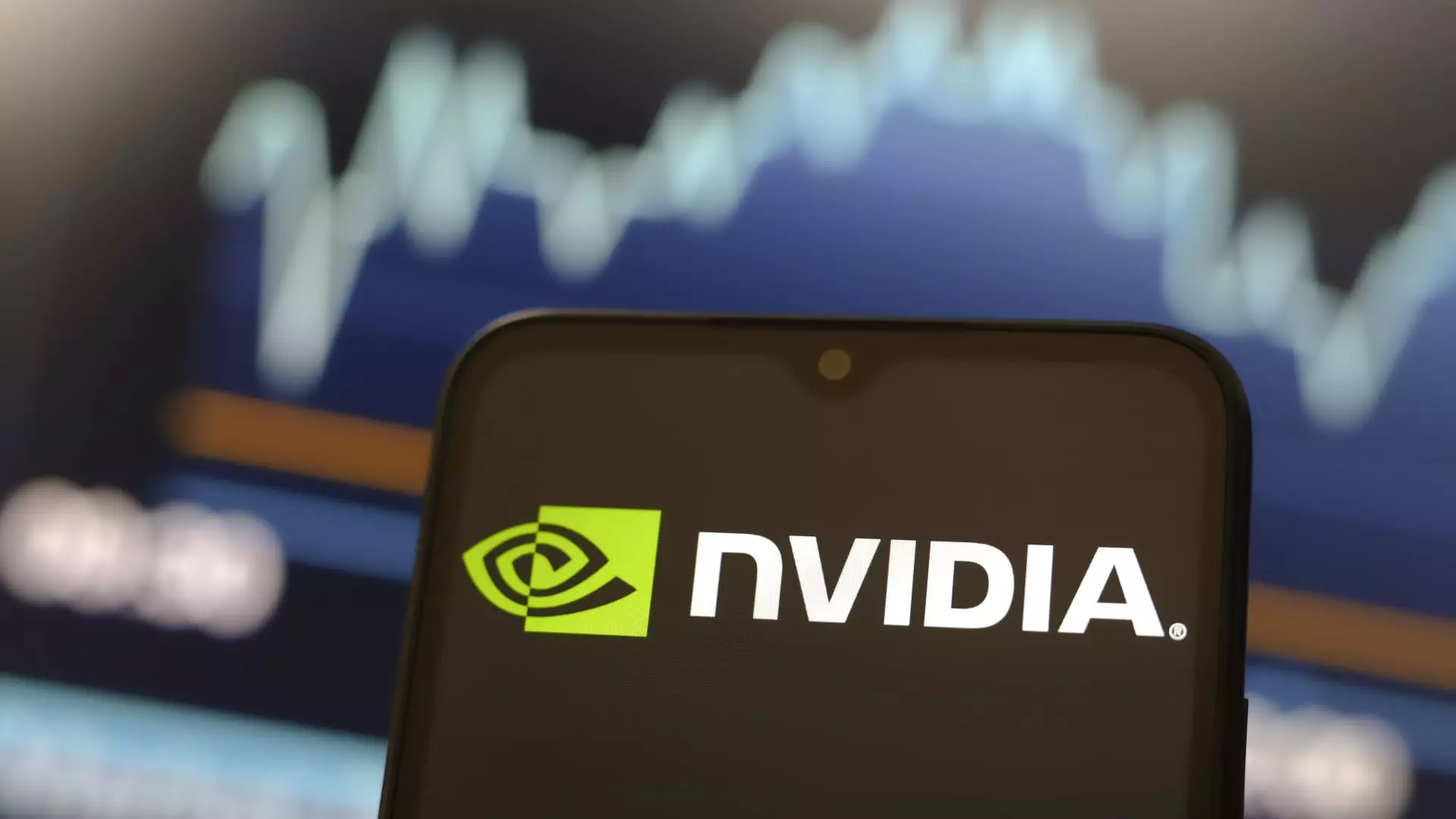In a surprising turn of events, Nvidia’s stock recently entered correction territory, despite the broader Nasdaq Composite reaching unprecedented heights. This juxtaposition raises critical questions about Nvidia’s standing in the rapidly evolving semiconductor market and its association with artificial intelligence (AI), a sector it has dominated convincingly this year. With a staggering 166% increase in stock value throughout 2023, fueled largely by the explosive demand for AI technologies, Nvidia’s recent downslide has sent ripples through investor circles, prompting an analysis of what this means for the company moving forward.
Investors are generally wary of a single stock’s decline, and the 4.5% dip in December, culminating in an 11% drop from its recent peak of $148.88, indicates that Nvidia’s momentum may be waning. This downturn meets the conventional definition of a market correction, which typically refers to a price decline of 10% or more from a stock’s all-time high. As the stock closed down 1.7% in recent trading sessions, many are left speculating about the underlying reasons for this behavior.
Experts like Keith Lerner, co-chief investment officer at Truist, suggest that while Nvidia’s GPUs are crucial for AI infrastructure, the market is showing signs of diversification. Lerner points to a notable shift within the “Magnificent Seven”—a term referring to the most significant tech stocks—that indicates investors are exploring opportunities elsewhere. This rotational market behavior underscores potential profit-taking on Nvidia’s stock, especially after such a stellar performance over the past year.
Moreover, as Nvidia’s stock stutters, other semiconductor firms are experiencing notable gains. For example, Broadcom’s shares surged by approximately 11% in one trading session, fueled by investor faith in its strong earnings. The contrasting performance of Nvidia and Broadcom serves as a vital reminder of the volatility inherent in the tech sector, where sentiment can pivot unexpectedly. While Nvidia remains integral to the AI landscape, the market is beginning to recognize alternative players that promise similar growth trajectories.
Investment analysts highlight the $125 to $130 price range as critical for Nvidia’s future. Should the stock fail to maintain this threshold, it may signal a more profound issue that could affect its overall competitiveness in the market. As Nvidia grapples with stagnation, investors should consider what such trends reveal about broader market dynamics, including the potential for overdependence on a single stock.
The downturn places pressure on Nvidia as competitors like Micron Technology, Marvell Technology, and others also rally, indicating a potential shift in investor sentiment. Micron’s stock, in particular, jumped around 6% ahead of its earnings announcement, showcasing the potential for dynamic trading opportunities beyond Nvidia.
Despite Nvidia’s recent challenges, the fundamental demand for AI infrastructure remains robust, largely inspired by advancements in large language models since the 2022 release of ChatGPT. This continuing trend suggests that while Nvidia may presently be underperforming, the longer-term prospects for the company remain positive if it can successfully navigate these headwinds and adapt to shifting investor sentiment.
However, the implications of Nvidia’s struggles extend beyond the company itself. As the Nasdaq Composite carves new records without Nvidia’s support, it raises questions about the sustainability of the broader tech rally. If Nvidia continues to falter, will other stocks in the semiconductor sector gain greater prominence? Will investor sentiment shift permanently away from Nvidia, or can the company reclaim its position atop the AI ecosystem?
As we continue to dissect Nvidia’s recent decline in the context of broader market trends, it’s crucial for investors and analysts to remain vigilant. The tech landscape is notoriously fickle, with rapid changes often dictating sudden shifts in stock prices. The journey ahead is fraught with uncertainty, but the ongoing growth in AI technology could still offer Nvidia opportunities for recovery.
While Nvidia’s present challenges underscore the volatile nature of tech investments, the company’s significant role in the growth of AI and semiconductor demand suggests that, with the right strategies, it might just bounce back stronger than ever. Thus, even amid a correction, Nvidia remains an essential player worthy of continued attention.

